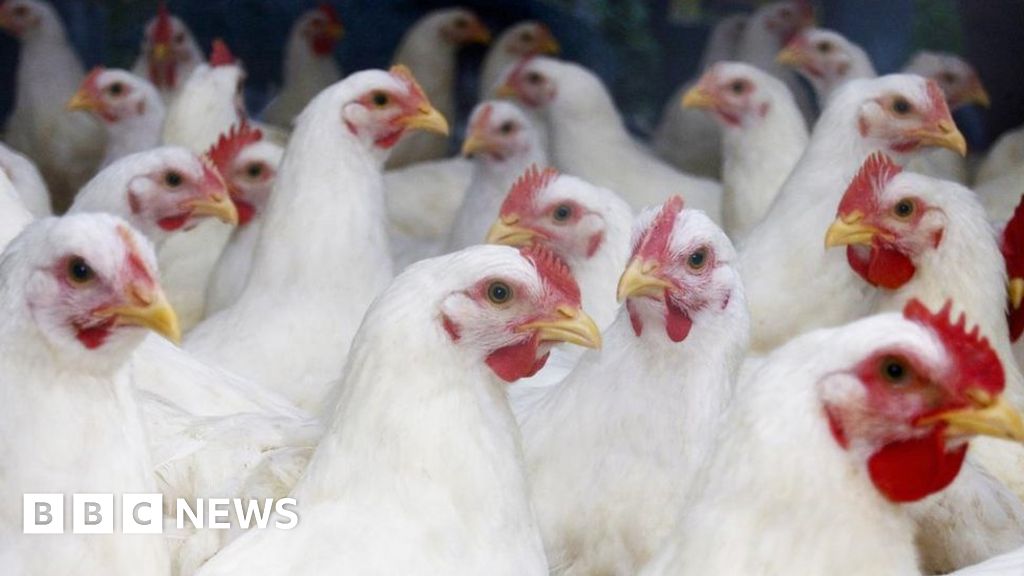Edit: I would recommend checking out the original article just for the sake of seeing the pictures of what hock burn looks like on packaged chicken you would buy from the supermarket.
My TL;DR:
“Hock burn” is caused by ammonia from excrement. A sign of poorer welfare on farms, it can be seen on a third of birds in some supermarkets.
Hock burn is often associated with a high-stocking density of birds and is a result of prolonged contact to moist, dirty litter. It shows up on packaged and prepared meat as brown ulcers on the back of the leg.
Chicken with hock burn markings are still safe to eat. But the amount of hock burn within a poultry flock is an industry-accepted indicator of wider welfare standards on farms.
Red Tractor, the UK’s biggest farm and food assurance scheme, sets a target rate for hock burn of no more than 15% of a flock.
Hock burn statistics from various supermarkets:
The BBC requested animal welfare data from 10 leading UK food sellers: Tesco, Sainsbury’s, Asda, Morrisons, Aldi, Co-op, Lidl, Waitrose, Iceland and Ocado.
Five of the companies - Asda, Morrisons, Lidl, Iceland and Ocado - failed to provide specific figures.
- Co-op, which is supplied with an estimated 30 million chickens a year, recorded hock burn in 36.7% of its poultry.
- Aldi’s most recent annual figures revealed it had found hock burn in 33.5% of its chickens.
- Company animal welfare reports reveal Tesco recorded a 26.3% rate in its chickens in 2022/23.
- Sainsbury’s found hock burn in one in five (25%) of its chickens.
- Waitrose had the lowest recorded annual figure of 2.7%.
- Lidl was one of the stores that did not provide data to the BBC. Volunteers found 74% of the chickens they checked had hock burn.



This is the best summary I could come up with:
Kate Parkes, poultry specialist at the RSPCA, told the BBC that hock burn was “a concerning health issue and, sadly, too common in many intensive farm settings”.
She added that the risk of hock burn “is significantly higher when birds are poorly managed, genetically selected to grow very fast or reared in overcrowded conditions”.
The British Poultry Council, which represents suppliers, processors and farmers, added that “drawing comparison between formal inspection and rigorous procedure versus a shop-shelf experiment has potential to mislead and misinform”.
It added that where hock-marking does occur “it is used as an indicator to identify areas for improvement because ours is an industry that operates to science-based standards, prioritises investment in research and development, and keeps pace with innovation”.
The BBC requested animal welfare data from 10 leading UK food sellers: Tesco, Sainsbury’s, Asda, Morrisons, Aldi, Co-op, Lidl, Waitrose, Iceland and Ocado.
Andrew Opie, director of food and sustainability at the British Retail Consortium, said: "Our members take their responsibilities to animal welfare very seriously, and expect high standards, independently audited, from all of their suppliers.
The original article contains 1,101 words, the summary contains 180 words. Saved 84%. I’m a bot and I’m open source!
This summary is utter garbage. Doesn’t even remotely capture the salient points of the article.
Bad bot?
It should be banned, outright, for spamming every goddamn comment section “un-invoked”. This is the most important bit, because “hiding” bots via your profile then means you can’t see any if you do want one.
If a human does want some bot spam in their inbox, the maker should allow it to send that human some gibberish in their own inbox rather than each comment section.
We’ll take the feedback on board 👍
If you block the bot, you won’t see its comments. I personally find the bot to be useful in most cases.
An ideal case would be where you comment against the post itself, and then a community allowed bot removes your comment and gives you a tldr: in your inbox.
Having bots spam comment sections like this only leads to users saying…
Bad bot?